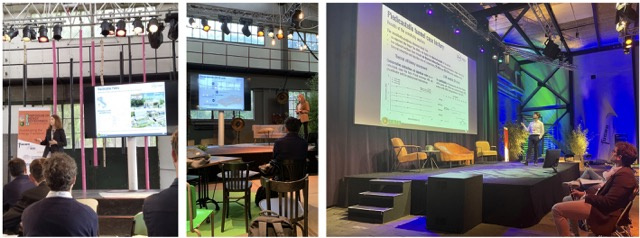Energy geostructures at SEG2023: real-world implementations, numerical modelling and artificial intelligence to drive the energy transition
This week (October 3rd-5th, 2023), the Delft University of Technology hosted the 2023 edition of the Symposium on Energy Geotechnics. Here, inspiring keynote lectures, as well as amazing contributions from all the participants, shared a common driving thread: accelerating the energy transition.
Among all, the contributions from the Politecnico di Torino and the Rockmech team were the following:
- "Lesson learnt from a full-scale installation of energy walls" by Marco Barla, Alessandra Insana and Andrea Benincasa di Caravacio.
This contribution reminisces of the construction phases needed to build the Politecnico di Torino underground car park, whose diaphragm walls were equipped for shallow geothermal energy exploitation. This corresponds to one of the biggest energy diaphragm walls all around the world (see more at https://proceedings.open.tudelft.nl/seg23/article/view/517).
- "A case study of thermal interaction at urban scale" by Maria Romana Alvi, Alessandra Insana and Marco Barla.
Here, the authors focused on thermal interactions from different geothermal usages at an urban scale, with reference to the case of the city of Turin and the project of the new metro line 2 (see more at https://proceedings.open.tudelft.nl/seg23/article/view/527).
- "An example of thermal retrofitting for the Piedicastello tunnel” by Simone De Feudis, Alessandra Insana and Marco Barla.
This contribution presented a method for converting an existing partly disused tunnel into an energy geostructure to harvest ground-trapped energy that would otherwise remain unexploited (see more at https://proceedings.open.tudelft.nl/seg23/article/view/533).
- "A neural network approach for quick dimensioning of energy walls" by Alessandro Poveromo, Alessandra Insana, Davide Papurello and Marco Barla.
To discover the thermal efficiency of energy walls, the authors proposed a new data-driven approach and trained an artificial neural network based on the evidence from the Geothermskin test site (see more at https://proceedings.open.tudelft.nl/seg23/article/view/521).
Congratulations to Alessandra Insana, Maria Romana Alvi and Simone De Feudis for brilliantly sharing the results of the whole research group.

